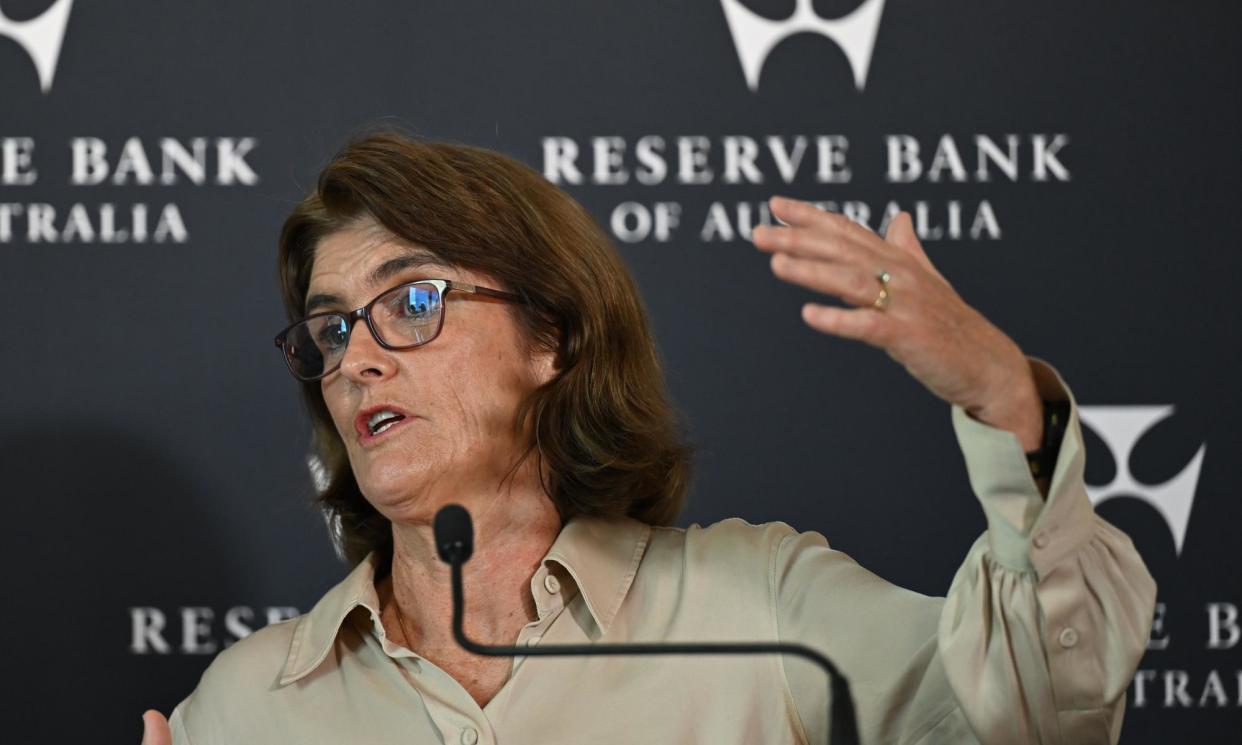RBA’s Michele Bullock sticks to narrow path as she plots course to a soft landing

If Michele Bullock learnt anything from her benighted predecessor, Philip Lowe, is that it’s wise to keep the Reserve Bank’s interest rate options open as long as possible.
Lowe got pilloried for stating as late as the end of 2021 that the central bank might keep its cash rate at its record low 0.1% until 2024. Qualified as they were that conditions could change, the view looked ridiculous half a year later when the RBA began its steepest rate hike series in three decades.
Bullock, a deputy governor and hence co-culprit during the first 12 interest rate rises since May 2022, proceeded to hike a 13th time last November at the second meeting she helmed. She even retained some of Lowe’s analogies when she explained her thinking on Tuesday.
“If our forecasts come true, and I really hope we’re on that narrow path that Phil used to talk about, then we can slow the economy enough that it preserves a lot of the gains in employment and brings inflation down,” Bullock said from the RBA’s makeshift offices at 8 Chifley Square while the old asbestos-ridden Martin Place redoubt is rebuilt.
In her relaxed manner, Bullock made it clear she won’t be making any bold predictions and – perhaps thanks to a beefed-up communications team – is happy to repeat vagaries to avoid boxing herself and the board into any preset rates course.
“I won’t be giving forward guidance,” she said, adding later, the RBA is “prepared to act if we see the risks moving in one direction or the other”.
Commentators will parse every word and examine every wink, nod or chuckle for nuance. The reality, though, is not a lot changed since the RBA’s first meeting of 2024 six weeks ago, other than more evidence the economy had slowed to a crawl.
Each statistic – such as February jobs data out on Thursday – will naturally be assessed against the RBA’s latest forecasts as though each offers a fresh signpost.
Will the RBA raise rates again – unlikely, but can’t be dismissed – or how soon will the axe be taken to the cash rate? Any rate reduction seems at least several meetings away – and possibly more – as monetary policy remains “slightly restrictive” and demand in the economy continues to exceed supply, Bullock said.
What comes next and when, in other words, remains anybody’s guess.
For instance, China, Australia’s biggest trading partner by the length of the Great Wall, “is something we look at a lot”, Bullock said. And no wonder, given its headwinds.
Consumption there “is very soggy” not least because China’s property sector remains in a deep funk. Property sales in the first two months of 2024 sank more than a fifth from a year earlier – albeit slightly less of a plummet than the 23% dive in December.
For Australia, can productivity growth really perk up to the RBA’s target of 3% growth for the year to June, allowing wages to keep rising in real terms without stalling inflation’s slide? Will more households start to snap under the burdens of rising prices and interest rates at 12-year highs, choking spending even with tax cuts on the way?
And could the federal pre-election budget in May – with what Bullock dubbed “lots and lots of competing demands on [the Albanese government’s] purse and their policies” – prolong the RBA’s python squeeze on inflation?
“Basically, at the moment, … monetary policy and fiscal policy are pushing the same direction,” she said.
A crystal ball is not in Bullock’s bag of tricks, but a broken record might be.
“I’ve said a number of times our forecasts are inherently uncertain,” she said.
“We’re not ruling anything in and we’re not ruling anything out. You’re going to get sick of me saying that.”


